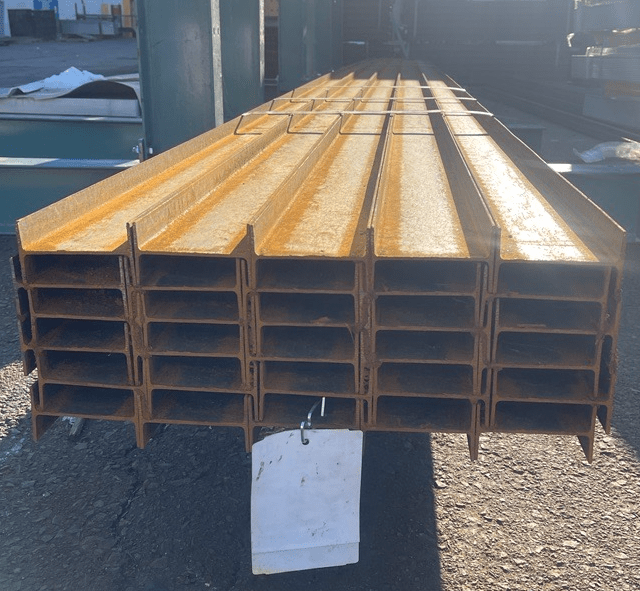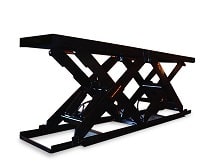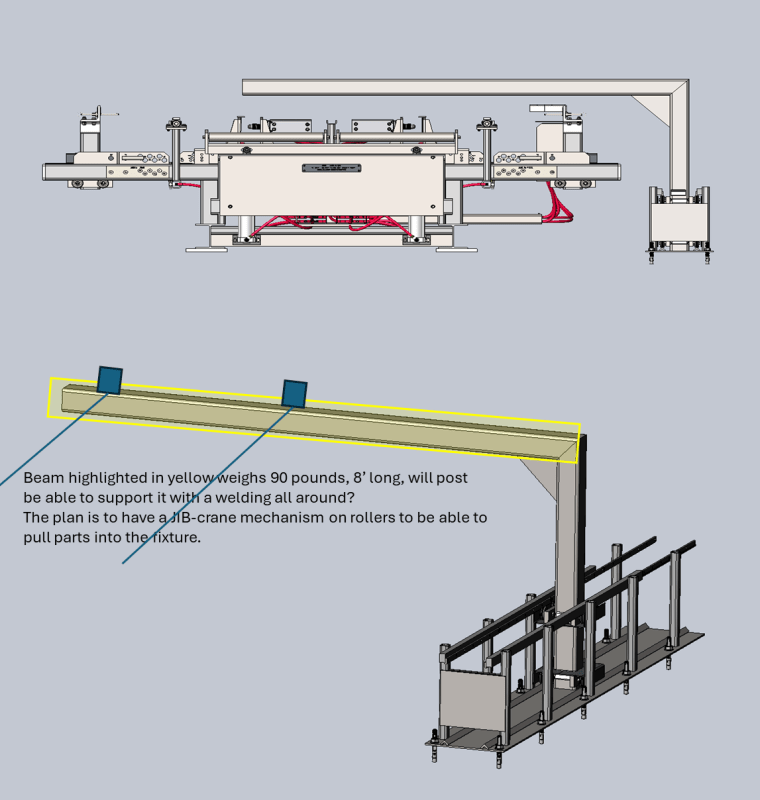
Hi fellow engineers,
We're looking for the operators to not lift more than 35 pounds at any given time in our production factory, I'm designing a a mechanism/method where I can place this bundle of I-Beams on a set of conveyor rollers or gravity rollers, then having a mechanism (pneumatic cylinder) that pushes an I-Beam one by one (the bottom one first, two needed to work on workcenter) for the operator to not do this operation himself, any idea of what method I can use?
Throwing some ideas out there depalletizer, destacker, etc. But how?
Please help me out.


